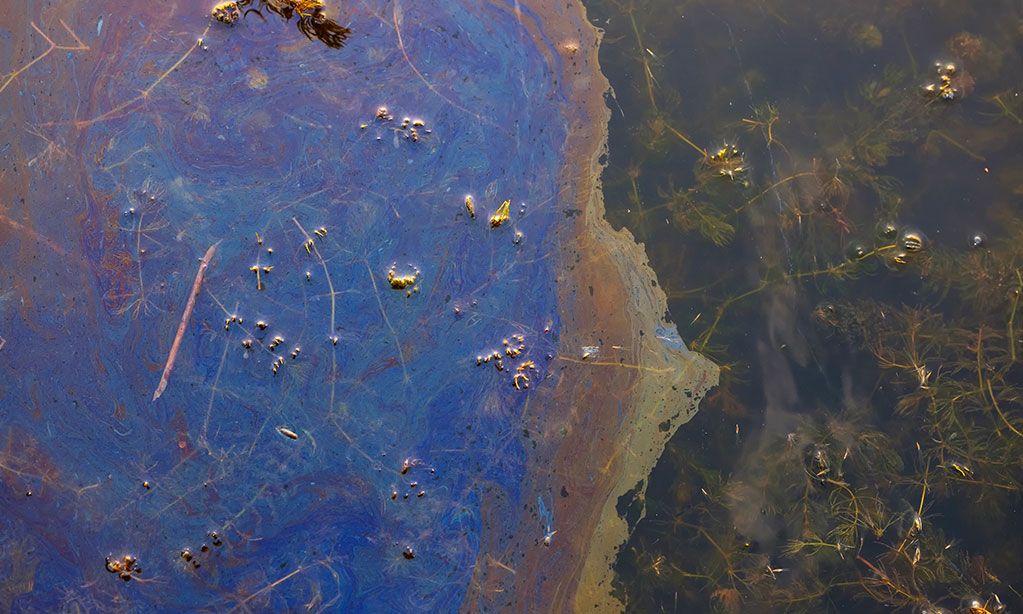

Sheen Rule 40 CFR 110.3
It only takes one drop of oil to create a sheen on water. Because that sheen can pollute streams, rivers, lakes and drinking water resources, it is illegal to discharge water if a sheen is present on the surface or if it contains oily sludges or emulsions that could be deposited beneath the water’s surface or on adjoining shorelines.
As part of the Clean Water Act, congress outlined reporting requirements for discharges of pollutants into Waters of the United States (WOTUS) in quantities that would be “harmful to the public health or welfare,” including discharges of oil. For many types of pollutants, the “harmful quantity” is expressed in pounds or parts per million.
For discharges of all forms of oil; including petroleum, synthetic and non-petroleum oils, a “harmful quantity” is a visible sheen. More specifically, it is any discharge that:
-
Cause a sheen or discoloration on the surface of a body of water
-
Violates applicable water quality standards; and
-
Cause a sludge or emulsion to be deposited beneath the surface of the water or on adjoining shorelines.

Any discharged oil must be reported to the federal government as soon as the discharge is discovered. To facilitate reporting, the National Response Center (NRC), which is operated by the US Coast Guard, is available for spill reporting 24/7/365.
In addition to reporting discharges with a sheen, the SPCC rule requires spills of more than 1,000 gallons of oil; or spills of more than 42 gallons of oil in each of two discharges within a 12 month period to be reported to the EPA Regional Administrator.
Like most rules, there are exceptions. An oil spill does not need to be reported when:
-
It is discharged from the engine of a properly functioning vessel. (Oil from the vessel’s bilge is not exempt.)
-
It is discharged in connection with research, demonstrations or studies that have been permitted by the EPA Administrator
-
It is discharged in compliance with the terms of an NPDES permit; or
-
It is discharged beyond the territorial seas of the United States in accordance with International Convention for the Protection of Pollution from Ships (MARPOL) rules
Related Articles
Subscribe for Updates:
Sign up here to get the latest news, rules, and regulations and delivered right to your inbox.